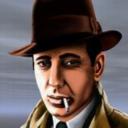Yahoo Answers is shutting down on May 4th, 2021 (Eastern Time) and beginning April 20th, 2021 (Eastern Time) the Yahoo Answers website will be in read-only mode. There will be no changes to other Yahoo properties or services, or your Yahoo account. You can find more information about the Yahoo Answers shutdown and how to download your data on this help page.
Trending News
why did we stop doing open field line battles?
The fighting tactics of the 1700 and 1800s. What ever changed that?
8 Answers
- HistoryguyLv 76 years agoFavorite Answer
Better weapons. Massed infantry like you'd see in the American Revolution or the Napoleonic Wars was necessitated by the inaccuracy of the smoothbore muskets used and the general poor marksmanship of conscript troops. To be able to reliably hit anything you had to gather them together in a line and have them volley fire, the sheer volume of shot in the air compensating for the lack of accuracy.
Beginning in the mid-19th century you had a number of innovations to firearms that made them much more accurate at farther ranges than they had been previously. In previous wars, the effective range of the muskets used had been short enough that an infantry charge could still hope to cover the distance between them and the enemy before they took too much damage. This was no longer really possible, except in special circumstances. If you look at the American Civil War, the few infantry charges tended to be disasters, with units getting chewed to shreds as they tried to advance. Things got even worse later in the century as repeating rifles, which could be fired without reloading, and eventually machine guns came on the scene. With this greater accuracy and volume of fire, massed infantry just ended up presenting more targets. The Americans learned this lesson after years of the Civil War and the end of that conflict increasingly saw people fighting from behind cover.
- Needful SinnerLv 76 years ago
"Why did we stop doing open field line battles?"
In a word...Accuracy.
Everything is about the weaponry involved.
Back in the day with swords and such close battle was a necessity; even up to The US Civil War with the musket; it fired a round lead ball through a metal barrel which tended to spin - you could be aiming at one guy and end up hitting the person next to them... or as likely have it totally go off target hitting nothing at all.
Being in a close formation with as many muskets firing at once - you're bound to hit something; was the tactical reasoning.
In turn, to gather as many troops in line formation, a line formation putting the most weapons on target as possible... one needs a large open space to maneuver such large line formations.
Once rilfed barrels and actual 'bullets' came into use and greater accuracy was gained, the necessity for line formations [thus open field battles] was lost. What you rifled actually went in a relative straight path to what you were aiming at; being about to take out the individual as opposed to the 'spray and pray' of a musket [lol] so no need to mass formations anymore.
- yankee_sailorLv 76 years ago
as needful said, accuracy and rate of fire. Once a rifleman could get off 5 aimed shots a minute and hit a man size target at 100 yards, standing up became suicide. Generals did not get that idea in America until 1865, when the shocking losses of the Civil War ( more than all our other wars COMBINED, right up to today ) sunk in.See Pickets Charge as the best known of a hundred actions.
The Brits, French and Germans didnt figure it out until 1918 when they lost a whole generation of young men tring to charge across open terrain.
- Anonymous6 years ago
Pickett's Charge during the Battle of Gettysburg was an absolute disaster for the Army of Northern Virginia. After that, thick-headed commanders on both sides had to realize that Napoleonic tactics were no longer appropriate and began to devise new battlefield tactics. It took another while, but by the end of our Civil War, that old form of battle was increasingly rare.
- How do you think about the answers? You can sign in to vote the answer.
- ammianusLv 76 years ago
Weaponry vastly improved.
Bolt action magazine loaded rifles
Belt fed machine guns
Rapid firing breech loaded artillery
Meant that troops could deliver much more firepower much quicker,further,and with greater accuracy than ever before.
Additionally,armies got much bigger.For example the Prussian army that invaded France in the Franco-Prussian War of 1870-71 was about 300,000 strong.The German army that carried out the Schlieffen Plan in 1914 was almost 4 million strong.
All this meant that men standing out in the open in lines and columns were just too vulnerable,and would be mown down in short order.
So,larger armies with much more effective weapons meant that battlefield formations and tactics had to change.





